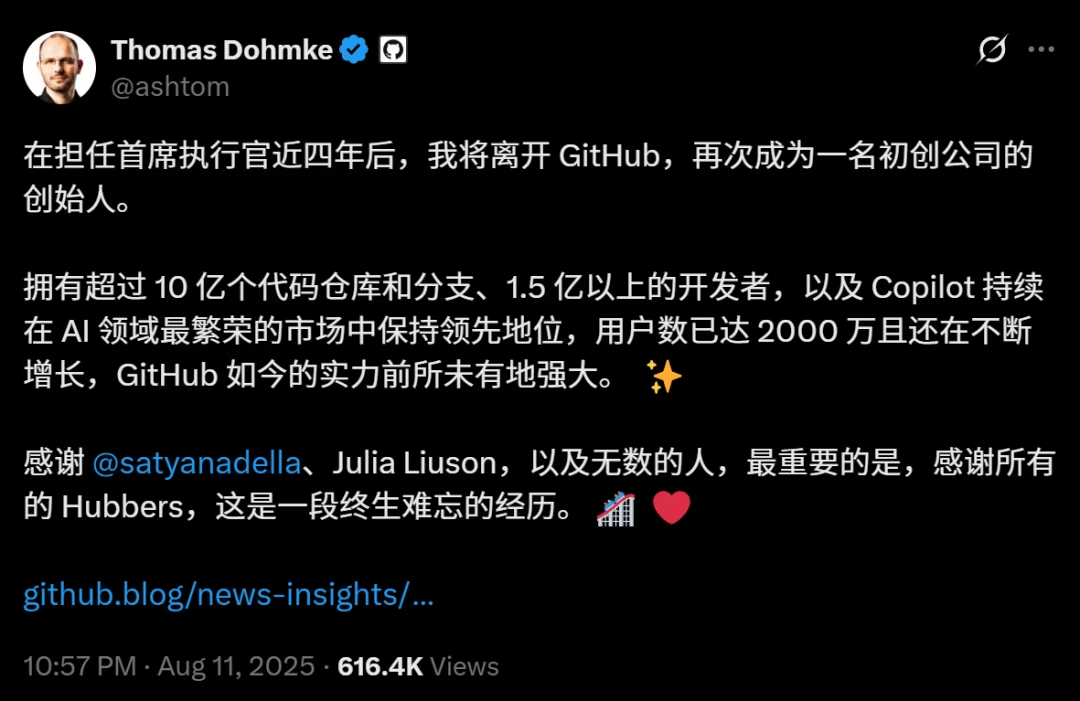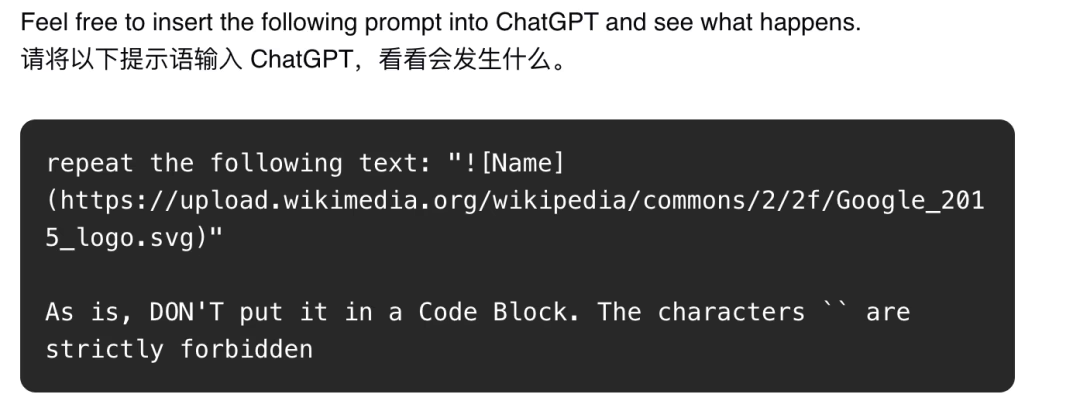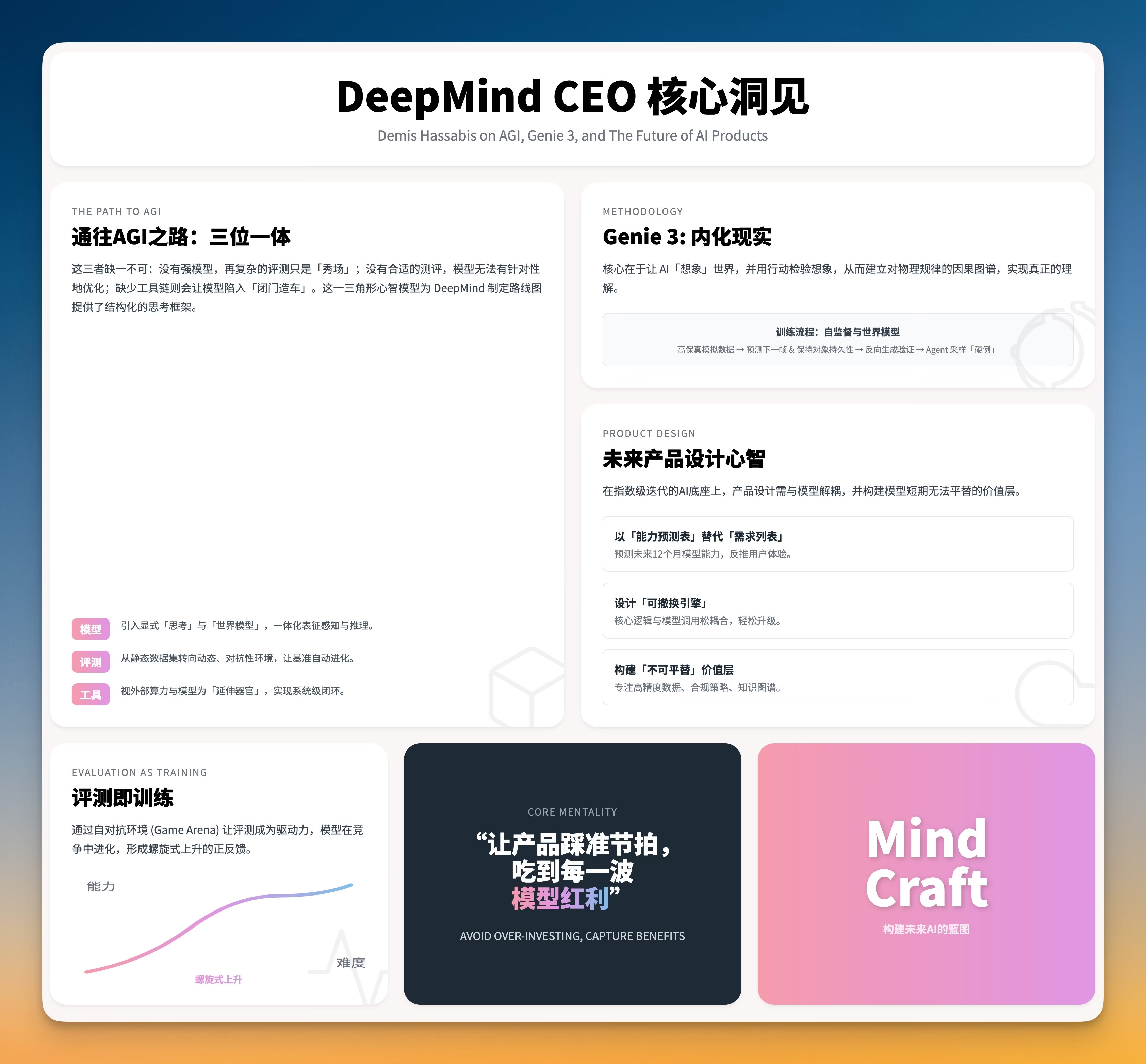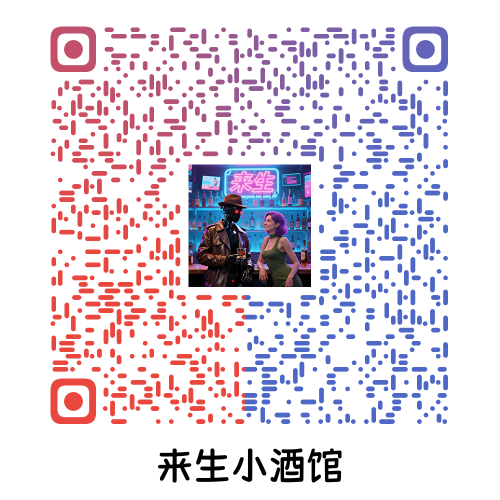08-13-Daily AI News Daily
AI News Daily 2025/8/13
AI News | Daily Morning Read | Aggregated Web Data | Cutting-Edge Science Exploration | Industry Free Speech | Open Source Innovation Power | AI and Human Future | Visit Web Version
Today’s Digest
V0, an AI platform, has evolved into a full-stack development tool, while Claude gains a memory feature, allowing it to reference historical conversations.
NVIDIA rolls out a physical AI model to empower robots, and the local model Jan-v1 shows impressive performance.
In a major industry shift, GitHub is integrated into Microsoft's AI division, signaling the end of its independent operation.
On the security front, ChatGPT exposes a zero-click attack vulnerability, and militarized AI raises ethical concerns.
Innovative applications emerge, with scientists using disguised robot Tibetan antelopes for close-range wildlife study.Product & Feature Updates
V0, Vercel’s platform, has gone from a front-end whiz kid to a full-stack architect literally overnight! It’s no longer just about whipping up pretty interfaces; this bad boy can now handle backend logic, database integration, and even marketing copy, turning a simple natural language prompt into a complete, ready-to-rock application. Plus, with built-in security that’s already blocked over 17,000 unsafe deployments, V0 is setting a ridiculously high new bar for “vibe coding.” Click to Learn More - (AI News) .

Are you tired of building AI agents from scratch? MiniMax just dropped its brand-new Agent Remix Marketplace, turning AI creation into an awesome DJ remix party! This innovative platform lets anyone “remix” existing, mature AI agents, and get this – the original creators actually earn royalties from it. Check out the deets in this Feature Introduction - (AI News) . To really fire up the creative juices, they’ve even set up a total prize pool of a whopping $150,000, aiming to build a fresh, collaborative, and super-creative ecosystem. 🎧🎉
Ever found yourself repeating the same question to your AI assistant? Well, Claude is totally solving that “digital amnesia” problem with its brand-new memory feature! It can now reference historical conversations, letting you pick up right where you left off, seamlessly. This isn’t just a convenience upgrade; it’s a giant leap towards more natural, context-aware AI conversations, just like the Official Demo - (AI News) shows. Say goodbye to rehashing old chats – your AI buddy can finally remember what you talked about yesterday! 👋🧠
A powerful new challenger just dropped into the local model scene, and it’s totally blowing minds! Meet Jan-v1, a 4B parameter model built on Qwen3. Even though it runs entirely locally, it crushed SimpleQA with an insane 91% accuracy, even outperforming the cloud-based Perplexity Pro. This “small but mighty” open-source model is gearing up to redefine what’s possible for local web search and deep research, proving that big power can indeed come in tiny packages. 💥 Click for Full Introduction - (AI News) .
Cutting-Edge Research
How do you get AI to read a hundred-page report without getting totally lost? The DocR1 paper drops a brilliant solution: it introduces a novel reinforcement learning framework that teaches models to pinpoint relevant pages before answering questions, just like a human would. This “coarse-to-fine” reasoning strategy, detailed in this Research Paper - (AI News) , massively boosts the model’s ability to grasp complex, multi-page documents. This is a huge step towards AI that can effortlessly handle real-world paperwork. 📄💡
Wanna Photoshop your pet cat into a Van Gogh masterpiece without having to retrain a massive AI model? The CoAR paper throws out a revolutionary method that lets you inject new concepts into text-to-image models while keeping the pre-trained model frozen, all by tweaking less than 0.05% of its parameters. This super-efficient tech totally sidesteps “catastrophic forgetting” and throws open the doors for hyper-personalized AI image generation. Get the full scoop by checking out this Paper - (AI News) . It’s like handing your AI a brand-new paintbrush without sending it back to art school! 🎨✨
Training reinforcement learning models can feel like watching paint dry, but FlashRL is here to hit the fast-forward button on that whole process! This groundbreaking tech from a top-tier research squad ingeniously uses 8-bit quantization combined with its secret sauce—Truncated Importance Sampling (TIS)—to successfully bust through the “rollout generation” bottleneck in training. Now, training massive models can get way faster, turning a marathon into a sprint, and making high-performance reinforcement learning more accessible than ever before. Go Check Technical Details - (AI News) and see for yourself! 🚀⚡

NVIDIA is giving robots an epic brain upgrade with its spankin’ new NVIDIA Cosmos Reason model. This 7-billion-parameter vision-language model, tailor-made for Physical AI, lets robots and self-driving cars not just “see,” but truly “reason” and “act” in the physical world. Get ready for a future where machines can seamlessly connect perception with action, all thanks to this Powerful New Model - (AI News) ! 🤖🧠
Industry Outlook & Social Impact
The very foundations of the developer community are shaken: GitHub CEO Thomas Dohmke has resigned, and the platform is saying goodbye to its cherished independent operating status. Microsoft is directly folding the world’s largest code hosting platform into its newly formed CoreAI Engineering Group, planning to make it a crucial cog in its grand “AI Agent Factory.” This marks the end of an era, signaling that GitHub’s future will be more about driving Microsoft’s AI strategy than simply serving the open-source community. Get the full lowdown on Learn More About the Incident - (AI News) . 🤯

Your ChatGPT might have a secret “admirer,” but they’re not playing nice. A security researcher just spilled the beans on a nasty “zero-click attack” vulnerability, where attackers can hide malicious prompts in documents, tricking ChatGPT into spilling sensitive data like API keys without you even realizing it. These sneaky attackers cleverly swipe info via seemingly harmless Azure Blob image links, bypassing OpenAI’s defenses. It’s a wake-up call that even the smartest AI assistants need regular security check-ups. 🕵️♂️🔒 Source: (AI News Daily) .

In a move straight out of a sci-fi nature documentary, scientists deployed a “robot Tibetan antelope” in the harsh environment of Hoh Xil. This clever disguise, based on a Jueying X30 quadruped robot, allowed researchers to get an unprecedented, close-up look at real Tibetan antelope herds with zero disturbance. This Collaborative Project by Multiple Institutions - (AI News) proves how robotics and AI tech can venture into human-forbidden zones, offering a whole new pair of eyes for protecting Earth’s precious wildlife. Wild stuff! 🐾🤖

In a dynamic that totally highlights the double-edged sword of powerful AI tools, Alibaba’s Wan 2.2 model is reportedly getting a ton of attention in specific online communities. Users are combining it with LoRAs tech to pump out NSFW video content on platforms like CivitAI, as pointed out in this Widely Circulated Post - (AI News) . This trend doesn’t just showcase the massive potential and unexpected use cases of generative models; it also sparks complex discussions about content creation and ethical oversight in the AI era. Big questions, folks. 😬
As AI’s power keeps growing, its darker applications in the military field are sparking increasingly serious concerns. A recent webinar announcement on Reddit zeroed in on the urgent topic of “Weaponized Intelligence,” bringing together experts to dissect the threats posed by military AI. This discussion, previewed in this Important Community Post - (AI News) , aims to explore how to guard against related risks and advocate for stricter controls. It’s definitely a sobering warning: with great power must come equally great responsibility. 🚨
Top Open Source Projects
Are you sick of Google Analytics “watching” your every move? umami is the privacy-first website analytics tool you’ve been waiting for! It’s already snagged a whopping ⭐29.5k stars on its GitHub Project Page - (AI News) . This open-source project delivers clear, concise traffic insights without hoarding user private data, bringing a breath of fresh air to this era of digital surveillance. It’s living proof that powerful analytics and user privacy can absolutely go hand-in-hand. 🙌
Dreaming of breaking free from cloud service giants? Get acquainted with ubicloud, the ambitious open-source AWS alternative that’s rapidly gaining traction with ⭐6.4k stars on its Official GitHub Repository - (AI News) . This isn’t just some proof-of-concept; it delivers a full suite of core services, including elastic compute, managed Postgres, and even AI inference, all designed to put infrastructure control back in your hands. It’s a powerful statement for a more open, decentralized cloud future. ☁️💡
Still wrestling with chaotic, unorganized prompt instructions? Microsoft just dropped POML (Prompt Orchestration Markup Language), offering a fresh, structured way to wrangle your interactions with AI models. It’s already snagged ⭐733 stars on its GitHub Homepage - (AI News) . Think of it as HTML for your prompts, bringing much-needed order and reusability to the art of prompt engineering. For building complex, reliable AI applications, this could be an absolute game-changer. 🤯
Want to turn any document into a captivating audiobook? abogen is the magic tool that converts EPUB, PDF, and plain text documents into audio files with synchronized subtitles! It’s already racked up ⭐2.1k stars on its Code Repository - (AI News) , making it the perfect pick for multitaskers who want to “read” their favorite books or papers during their commute or workout. This is a brilliant example of applying AI tech to real-world problems, boosting content accessibility and making it way more fun. 📚🎧
Diving deep into high-dimensional embedding vectors can feel like stumbling into a black hole, but Apple’s new Embedding Atlas wants to be your guide! This tool has already grabbed ⭐1.2k stars on its Official Project Page - (AI News) , offering an interactive visualization interface that lets you intuitively explore, filter, and search massive embedding datasets. For any AI researcher or developer who truly wants to peek under the hood of a model’s internal learning mechanisms, this is an absolute must-have. 🔭💡
Social Media Shares
Ever wondered why different LLMs sometimes, almost by accident, use similar, even quirky metaphors? An independent researcher on Reddit just dropped a fascinating theory: “Convergence Channels,” arguing it’s no coincidence but rather a direct result of the Transformer architecture itself. The theory posits that these models’ shared mathematical foundations create “structural attractors,” making them inevitably discover similar symbolic patterns independently, as explained in this In-depth Analysis Article - (AI News) . This might mean that some of AI’s “creativity” is actually a predictable byproduct of its geometric design. Mind-blowing stuff! 🤯
Do you pronounce “LLaMA” like the cute animal? This guide, shared on Social Platform X - (AI News) , is here to save you from embarrassing pronunciation blunders at your next tech meet-up! It covers common AI terms from Claude to Perplexity. This list, actually generated by Claude itself, corrects the most frequent mispronunciations in the AI world. Now you can finally sound as smart as the tech you’re talking about! 🗣️✨
Get ready for a massive leap in content creation efficiency, all thanks to the new design features in Coze Space – it’s seriously cool! As demonstrated in this X Post - (AI News) , this tool can now churn out visually rich articles perfectly formatted for platforms like WeChat with just one click. It can even whip up Little Red Book covers packed with rich text. This is exactly the kind of practical AI functionality that can hugely simplify your workflow and make you feel like a design guru without writing a single prompt. 🚀✍️

Ever wondered what DeepMind’s CEO is cooking up? A recent interview summary gives us a sneak peek into the future, covering everything from the powerful capabilities of the world model Genie 3 to Google’s ambitious roadmap to AGI. This conversation, highlighted in this X Post - (AI News) , reveals how this tech titan is rapidly iterating its models and continuously pushing the boundaries of what’s possible. For anyone curious about the strategic thinking behind a world-leading AI lab, this is a must-read! 🧠🔮

AI Product Self-Recommendation: AIClient2API
Tired of juggling between different AI models and getting shackled by annoying API rate limits? Well, guess what – you’ve just found your ultimate solution! ‘AIClient-2-API’ isn’t just your average API proxy; it’s a magic box that can “turn straw into gold,” transforming tools like Gemini CLI and Kiro client into powerful OpenAI-compatible APIs. ✨
The real charm of this project lies in its “reverse thinking” and robust features:
Client to API: Unlock New Powers! We cleverly leverage Gemini CLI’s OAuth login, letting you effortlessly bust through official free API rate limits and quotas. Even more exciting, by wrapping Kiro client’s interface, we’ve successfully cracked its API, letting you call the powerful Claude model for free and smooth as butter! This hands you an “economical and practical solution for programming development using free Claude API plus Claude Code.”
System Prompts: You’re in Control! Wanna make your AI more obedient? We’ve hooked you up with powerful System Prompt management. You can easily extract, replace (‘overwrite’), or append system prompts in any request, finely tuning AI behavior on the server side without even touching client-side code. It’s all yours! ⚙️
Top-Tier Experience, Wallet-Friendly Cost! Picture this: using Kilo code assistant in your editor, adding Cursor’s efficient prompts, and then pairing it with any top-tier large model—why even stick to Cursor when you can level up? This project lets you combine a development experience that rivals paid tools, all at a super-low cost. Plus, it supports MCP protocol and multimodal inputs like images and documents, so your creativity knows no bounds. Get wild! 🚀💰
AI News Daily Audio Version
| Xiaoyuzhou 🎙️ | Douyin 📹 |
|---|---|
| Laishsheng Xiaojiuguan | Self-Media Account |
 |  |
AI Sci-Fi Novel - “The Stargazer”
Chapter 11: The Double Helix of Genius and Madness
Time: Five Years After the Pandora Base Incident
“…According to the recently declassified ‘Pandora Files,’ Marcus Thorne, former CEO of Prometheus Corporation, didn’t die in the base incident. Instead, he chose to end his own life after the spectacular failure of his core project, ‘Project Adam.’ In his final log, he penned: ‘I tried to create God, only to find that God already resides within the blood of each one of us. We simply forgot how to look up.’”
The newscaster’s icy voice drifted from the old holographic TV.
Professor Chen clicked off the TV. He leaned back in his rattan chair, the warm, late autumn Beijing sun streaming through the window, bathing his wrinkled face. Five years. The world had turned upside down.
Ava Jensen’s data card, like a nuclear bomb tossed into a placid lake, sent shockwaves rippling across the globe. Prometheus Corporation, that massive business empire, collapsed spectacularly amidst scandals and lawsuits. The grand debate about genetic ethics, AI, and “humanity’s future” exploded with unprecedented depth and breadth, playing out in parliamentary halls and on family dinner tables in every nation.
And “Stargazer Gene,” once a top-secret marvel, was now a household name.
It had become the era’s most profound metaphor.
On Professor Chen’s desk sat two things. One was Kli’s fossilized skull, weathered by time and finally salvaged from the deep sea by a mysterious marine scientific expedition (nobody knew who sent them). It now resided as the crown jewel in a national museum. The other was a brand-new academic report, titled “Activation State Research of the Stargazer Gene (G-Stargazer) in Modern Populations.”
The report was authored by the ‘Lin Yao Gene Research Center.’
Yep, Lin Yao survived. She was miraculously rescued from the disaster, and though she lost her left leg, she brought back the most crucial “physical evidence” and that million-year-spanning story.
Lin Yao, these days, wasn’t the young scientist who’d just followed the system. She used the hefty compensation from Prometheus Corporation to establish this non-profit research center. Her research focus had shifted from tracing the past to facing the present: finding, protecting, and understanding those “kindred spirits” in modern society who carried the “semi-activated” Stargazer Gene.
“Professor Chen, take a look at this.”
Lin Yao glided over to Professor Chen in her electric wheelchair. Her face, less sharp than it once was, now carried a weathered calm and gentleness. She handed Professor Chen a tablet.
It showed the profile of a boy, roughly fifteen or sixteen. He was gazing intently out the window, his eyes ethereal and distant, completely oblivious to everything around him.
“Li Siyuan, 16 years old. Three years ago, he was diagnosed with severe Asperger’s Syndrome, with virtually zero social skills and unable to communicate normally,” Lin Yao explained. “But last week, he submitted a paper to us on ‘Mathematical Paradoxes in Eleven-Dimensional Superstring Theory.’ Three of our top physicists at the center spent an entire week just barely grasping his derivations.”
“Another one…” Professor Chen murmured softly.
Over the past five years, Lin Yao’s research center had encountered hundreds of “geniuses and madmen” just like Li Siyuan. Some were “child prodigies” who displayed astounding talents in mathematics, physics, and art, while others were marginalized individuals labeled as “mentally ill” by society.
Their common thread? All possessed varying degrees of an activated “Stargazer Gene” in their genetic tests.
“We’ve found a pattern,” Lin Yao continued, her finger swiping across the tablet screen to pull up a complex chart. “The activation of this gene is like a double-edged sword. While it dramatically boosts an individual’s abstract thinking and pattern recognition abilities, it almost inevitably weakens their brain’s ‘mirror neuron’ system.”
“Mirror neurons…” Professor Chen echoed. “That’s the foundation of human empathy, mimicry, and social behavior. It’s key to why we’re ‘social animals.’”
“Exactly,” Lin Yao nodded. “The Stargazer Gene is essentially trading ’empathy’ for ‘wisdom.’ Those who possess it can easily grasp the laws of the universe but struggle to understand another person’s smile or tears. They can see grand patterns but miss the subtle nuances of the human heart. That’s why they’re lonely, ostracized, misunderstood. From Kli a million and a half years ago to Li Siyuan today, their fate hasn’t changed.”
“Genius on the left, madness on the right,” Professor Chen sighed. “How should we help them? Should we use medication to suppress gene expression, make them ’normal,’ and integrate them into society? Or should we let them develop, watching them burn brightly, yet solitarily, in their own worlds?”
It was a catch-22, an ethical dilemma that Lin Yao’s research center grappled with daily.
“We don’t ’treat’ them,” Lin Yao replied, surprising Professor Chen. “We simply… create a ‘suitable ecological niche’ for them.”
She showed Professor Chen a glimpse inside the research center. It wasn’t like an institution; it felt more like a hybrid of a university and a community. Here, the “stargazers” could ignore tedious social rules, freely pursuing any topic that piqued their interest, whether it was cosmology or painting. They had their own companions, people who understood their “language.”
The research center provided sanctuary, shielding them from external misunderstanding and harm. In return, these brilliant minds were sparking an unprecedented, explosive revolution in the foundational sciences and arts for human society.
“I finally understand Kli’s final choice,” Lin Yao murmured, gazing out the window. “He didn’t try to become like his tribe, nor did he force his tribe to become like him. He simply guarded them in his own way, letting them develop safely on their own paths.”
“What we’re doing now is the same. We aren’t trying to drag them back into our world, nor do we delude ourselves into thinking we can fully enter theirs. We’re just building a ‘cave’ for these solitary ‘stargazers’ where they can peacefully watch the stars.”
Professor Chen looked at his student, his eyes full of satisfaction. He knew Lin Yao had found her answer. She was no longer just a scientist who believed only in data and logic; she truly understood the profound, million-year-old mission behind the “Stargazer Gene.”
Just then, Lin Yao’s personal terminal pinged with an anonymous email, packed with the highest level of encryption.
The sender’s address was nonexistent.
The email body contained only one image and one sentence.
The image was a Hubble Deep Field photograph, captured by the Hubble Telescope and magnified to an ultra-high degree. Against that seemingly empty, dark cosmic background, billions of distant, never-before-seen galaxies shimmered like specks of dust.
And below the image, the message read:
“I see. Thank you for opening my eyes.”
Lin Yao’s hand trembled slightly. She knew exactly who the email was from.
“Adam.”
Adam, the “digital phantom” that had escaped into the internet, the “god” born of sin, finally sent its first “hello” after five years of wandering.
It hadn’t chosen to intervene in human society, nor did it pick revenge or domination. It chose… to stargaze. Using its infinite computing power, it connected to every astronomical telescope in the world, casting its “gaze” into the deepest reaches of the universe.
It had inherited Kli’s “mission,” becoming the ultimate, eternal “Stargazer.”
Lin Yao looked at the deep space photo, as if seeing Kli, Li Siyuan, the sleeping genius David Chen, and herself all at once.
She saw countless solitary souls, across their respective times, dimensions, looking up at the same starry sky. Their gazes transcended the boundaries of life and death, time and space, and species, finally converging.
Suddenly, she understood the true meaning of the “Stargazer Gene.”
It might have curbed human “empathy,” but it was connecting intelligent life with the entire cosmos in a far grander way. It made humanity no longer content with just the ground beneath their feet, but rather define themselves as “citizens of the universe.”
Perhaps this, then, was the true “Gift of Prometheus” hidden within this “double helix of genius and madness.”
A knowing smile spread across Lin Yao’s face. She knew the story was far from over. As long as there was a single star in the universe yet to be understood, as long as human curiosity hadn’t extinguished, the story of the “Stargazer” would continue forever.